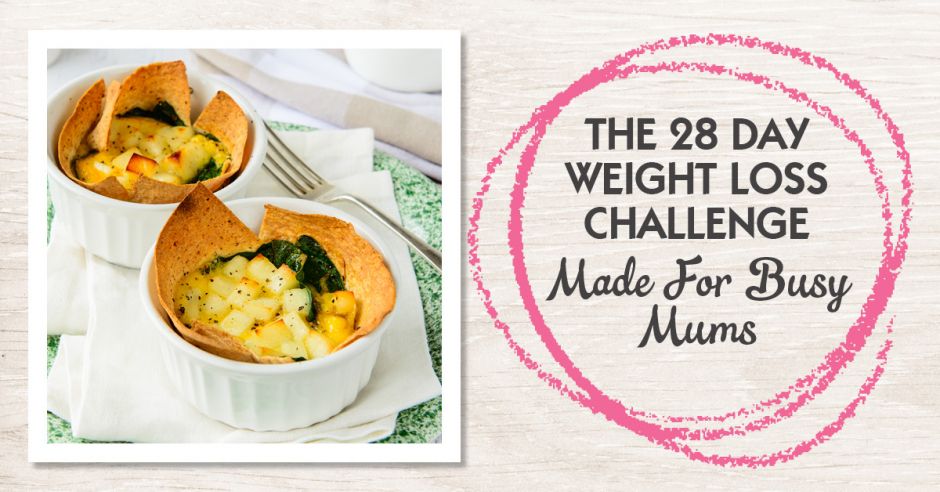At Lose Baby Weight we believe that breastfeeding and weight loss can go hand in hand which is why we have created the 28 Day Breastfeeding Friendly Diet & Exercise Plan and have ensured that our weight loss plans are safe for breastfeeding mums.
More and more mums are breastfeeding their babies for longer these days but mums still want to lose their baby weight whilst breastfeeding and there is much confusion about what mums should or shouldn’t do while combining breastfeeding and weight loss.
Everyone has a different relationship with their body and with their own fitness and weight loss – and this becomes even more apparent after we have had children.
Some mums choose to lose the weight straight away and many others don’t even think about losing weight for a year or two later (or more).
There is no right or wrong time to start thinking about pregnancy weight loss – unless you have a medical problem where weight loss is essential. But instead no one should ever feel pressured to lose weight and you should only do it when you feel 100% emotionally and physically ready to do so.
But if you are breastfeeding and do want to start a losing pregnancy weight, the good news is that it is possible to lose weight when breastfeeding providing you follow a breastfeeding safe diet. This means following a diet plan that is based on healthy eating principles and light exercise and is free from caffeine and any weight loss accelerants.
It is important not to follow any extreme diets which advise cutting out food groups or eating too much of one group – for example a diet that tells you to only eat protein each time you eat.
At Lose Baby Weight, we ensured that all our pregnancy weight loss plans are based on getting optimal nutrition into your body and being in the best health possible. Our plans help to nourish your body and ensure you lose weight in a safe and healthy way.
So the good news is that if you are breastfeeding, you can still follow our weight loss plans – the key is to increase your calorie allowance on our plans by approximately 500 calories to give your body the extra calories it needs to produce milk.
You can increase your calories by having an extra 2-3 snacks from our suggested snacks or you can increase your portion size of the meals. We list ideas on how to increase the portion size on each of the recipes in the 28 day challenges
If you are choosing to include our Healthy Mummy Smoothies on the 28 Day Weight Loss Challenge, these are also safe for breastfeeding mums, they are 96% sugar free, are fructose free and you can see the full ingredient list here
Plus you can also see the midwife reviews here on our plans
And as knowledge is power, we have given you some key information to arm yourself with so that you can lose weight with confidence when still feeding your baby.
Breastfeeding & Weight loss
Breastfeeding burns up a lot of energy (calories/kilojoules) to make breastmilk, particularly for mothers who are exclusively breastfeeding. These mothers should include 2-3 extra snacks per day (approximately 500 calories).
If you are unsure of how many calories you need in breastfeeding and weight loss you can work your daily energy needs out here – then you add 500 calories on for breastfeeding. But remember, nothing is set in stone, and if you are hungry eat more or if you are full eat less. See the calculator here
While breastfeeding, certain nutrients, energy and fluids will be in high demand, much more so than during pregnancy. These include:
- Iodine Since breastmilk needs to contain an adequate iodine content to support your infant’s growing brain, a new mother’s iodine requirements are almost double the normal. It is possible to meet these iodine requirements with food, although an iodine-containing supplement is usually recommended. It’s important to speak to your doctor before taking any supplements. Good sources of iodine include bread, iodised salt, seafood, eggs and dairy.
- Zinc is essential for skin health, immune function and optimal reproductive health. Good sources of zinc include meats, breakfast cereals, brightly coloured vegetables and fruit.
- Iron is a component of a number of proteins, including haemoglobin, which is important for transporting oxygen around the body. Eat too little iron and you’ll suffer fatigue and a weakened immune system. Red meat, chicken and fish are the best sources of iron, as well as also being good sources of protein and zinc. Smaller amounts of iron can be found in green leafy vegetables and legumes, but they should be consumed with foods rich in vitamin C (such as tomato, broccoli or capsicum) to increase the amount of iron the body absorbs.
- Water is the best way to quench your thirst without getting the added sugar and kilojoules found in sweetened drinks, such as fruit juices, soft drinks, sports drinks and flavoured mineral waters. Although it doesn’t increase milk production, it’s still important to keep hydrated; a good guide is to drink a glass at each meal and again with each breastfeed.
What to avoid
- Alcohol is best avoided for at least 4-6 weeks after birth. It takes most women about two hours to clear the alcohol from the blood and their breastmilk, so plan the occasional drink with this in mind.
- Caffeine in coffee and tea can be enjoyed in moderation – no more than 200mg a day (two cups of coffee).
Specific foods which may cause problems
There are no hard and fast rules about what a mum shouldn’t eat when breastfeeding – other than certain supplements mentioned above and alcohol. However there are certain foods which have been shown to cause upset in the baby – whether that be sickness, eczema, colic, trouble sleeping and irritability.
However, each baby is different and you should monitor yours to see how he reacts to certain foods and contact your Doctor if you are concerned about any reaction– below is a list of common foods listed by mums and Doctors as more likely to cause some kind of reaction with your baby:
- Milk, dairy, broccoli, cauliflower, cabbage and spicy foods have been linked to colic
- Too much caffeine may make your baby restless
- Eggs and peanuts have been shown to be linked to allergies in babies
More than anything it is important to eat a balanced diet when breast feeding and if you are trying to lose your baby weight, do so in a safe way and aim for approximately 500g-1kg per week.
Sensitive Babies
Some babies have allergies, colic or digestive issues and can react to an array of different foods. If your baby is particularly sensitive we advise discussing a food plan with your Doctor and sticking to a plain diet with low taste foods to avoid any reaction. And you can read more on this from the ABA here
Milk Supply & Breastfeeding
When it comes to your milk supply, it’s not so much weight loss that’s the issue, more so the way you choose to lose weight. Dramatically reducing calories, restricting certain food groups or engaging in high intensity exercise can all play a role in reducing your supply. On the other hand, undertaking a healthy eating plan that focuses on providing your body (and baby) with all the nutrients you need, may actually help support your supply, especially if you’ve struggled to eat properly in the past.
Ensuring that you’re including regular, nutritious meals that contain adequate amounts of protein, carbs and healthy fats in your diet is essential for both your milk supply and own health. A healthy baby needs a healthy mum so taking care of your own health is absolutely vital, especially when breastfeeding.
A healthy and varied diet can help support a healthy supply as well as give you lots of energy, but what about foods and herbs that are reported to give a visible boost to your milk levels? These menu items, commonly referred to as lactogenic foods or herbs, are said to help increase your milk production, boosting your supply temporarily. It is often thought that by boosting your supply, your baby will eat more, which will then encourage your breasts to continue to produce a higher level of milk.
The scientific community errs on the side of caution when commenting on the actual evidential proof that certain foods or herbs can increase milk production, but the anecdotal evidence from other mums often hints strongly at the success of food and/or herbs in boosting their supply. Provided you don’t have any allergies to these foods or herbs, or go overboard, there’s no reason why you can’t include them in your diet if you are concerned about your supply.
The most commonly recommended lactogenic foods and herbs are:
- Oats
- Carrots and spinach
- Legumes like chickpeas and lentils
- Brown rice
- Apricots
- Salmon
- Brewers yeast
- Ground linseed or LSA mix
- Fenugreek tea or tablets
A Healthy Mummy smoothie is a great option as it contains all the essential elements of a nutritious meal, along with ingredients like fenugreek and flaxseed that can help support your supply. A smoothie for breakfast and/or lunch is a quick and easy way to ensure you’re eating well, even when you’re pushed for time – and we suggest snacking in between meals too.
Breastfeeding & The Healthy Mummy Smoothies
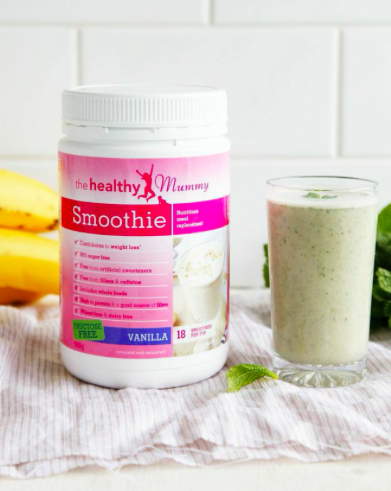
We are also regularly featured on TV and in the media and write a monthly column in Practical Parenting Magazine – you can see some of our media coverage here
You can see the reasons why it is different to other shakes and meal replacements below
It is accelerant and filler FREE
We are proud to say that our Smoothie is free from any fillers and weight loss accelerators. Many many weight loss shakes contain fillers and weight loss accelerants to trick your body into short term – and unhealthy weight loss. These artificial fillers make your tummy feel temporarily full are not natural and the long term effects are not known. They can also lead to a lot of the side effects associated with ‘shakes’.
It contains wholefoods
The Healthy Mummy Smoothie contains wholefoods and over 25 vitamins and minerals. The product is high quality and every ingredient in the smoothie has been included to be a benefit to your health. Most shakes do not provide this high quality and the reason you will see many ‘giveaway’ offers on TV with these brands is because their product is extremely cheap to make and do not use the wholefoods and high quality vitamins and minerals that we do – so it is very cheap to make and their product is topped up with sugar and fillers to bulk it out.
It is dairy and wheat free
Today many people have allergies to dairy and wheat so our smoothie is free of both of these. We use non genetically modified Soy Protein Isolate which uses only the protein part of the soy – not the oestrogen part of the soy.
It is breastfeeding friendly
We do not use any caffeines or weight loss accelerants in our smoothies so that breastfeeding mums can use it. We also included fenugreek in the smoothie to be an additional benefit – and if you are not breastfeeding, fenugreek can still be a great benefit to your health as it provides carbohydrates, dietary fibre, fats and minerals like iron, calcium and phosphorous.
We have thousands of emails each month from mums on our plans who report improved milk supply from using our smoothies, but if your baby has any food sensitivities or suffers from colic we recommend talking to your Dr before changing your diet or using our products and plans. And you can read more on this from the ABA here
You can click here to read some stories of mums who have sent in results of increased milk supply on our smoothies. Read Barbara’s story here Read Emma’s story here Read Jessica’s story here Read Amy’s story here Read Claire’s story here Read Linda’s story here
It is a formulated meal replacement & passes international standards
Our smoothie is a formulated meal replacement and has passed International Food Standards. It provi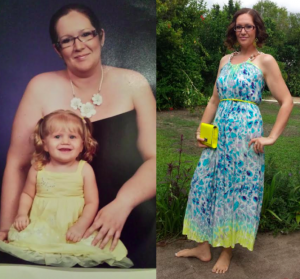
This means they cannot be used as a meal substitute as they do not contain enough nutrients and energy to fuel your body and consumers can often be mislead into thinking a product called a Shake is a meal replacement when it is not. You can see a comparison table with other shakes here
It has helped mums lose over 1,000,000kg
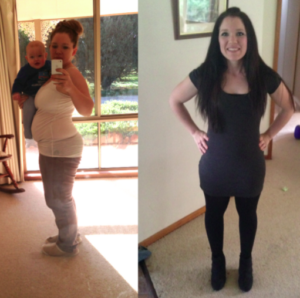
And mums also like to use them in conjunction with our 28 Day Diet & Exercise Plan – which is also breastfeeding friendly.
You can see hundreds of results from mums on our plans here
What ingredients are in the Smoothie?
The smoothies are free from artificial sweeteners, additives, fillers, caffeine and weight loss accelerants
Included in our smoothies are:
- Apple pectin – a source of soluble fibre that forms gel naturally
- Rice bran fibre – a highly fibrous ingredient
- Cellulose – major component of cell wall in plants
- Psyllium husks – a water-soluble fibre to aid digestion
- Inulin – a natural vegetable fibre to aid digestion
- Flaxseed meal – healthy fats (omega3 fatty acids) & high fibre making it an ideal ingredient for post birth nourishment
- Pumpkin seed meal – adds bulk to assist a sense of fullness & contains a high level of essential fatty acids, protein, zinc & iron.
Protein For Health & Weight Loss:
- Soy protein isolate (non GM) – a complete protein low in fat with high digestibility. The protein is a soy protein isolate – which means the protein has been isolated and the oestrogen and hormone part of soy is not included in the product – only the protein part of the soy
- Methionine 10mFg – important amino acid for normal metabolism
- Protease (from aspergillus) – group of enzymes that assist digestive process by breaking down proteins
- Soy lecithin 400mg (non GM) – emulsifying that can aid the digestive system
- Bromelain 5mg – enzymes from pineapple assisting protein digestion.
Herbs For Your Health – during a weight loss diet, herbs can help to maintain a feeling of general wellbeing:
- Ginger root – a spice often used to improve metabolism while soothing the stomach
- Fenugreek – Provides carbohydrates, dietary fibre, fats and minerals like iron, calcium and phosphorous. It also provides support for breastfeeding mothers
- Dandelion root – helps absorption of nutrients in “The Healthy Mummy” Smoothie and Rich in Vitamin A,C and B2, iron and calcium
LOW GI: as part of a weight loss diet, low GI foods help to release glucose more slowly leading to a more stable blood glucose level.
Natural ingredients in our smoothies help give a gentle sensation of feeling fuller for longer, helping to avoid eating large meals or over snacking. They help to bulk the stool & aid bowel eliminations.
We do not use any artificial sweeteners in our smoothies and use a small amount of thaumatin (natural plant based sweetener) sweeten the smoothies and they are 96% sugar free.
Other useful facts
Breastfeeding and Weight Loss Fact 1 – Slow and Steady
If mums are breastfeeding with weight loss aspirations, then they can still have a ravenous appetite, so focusing on a calorie-controlled breastfeeding and weight loss diet plan can be very challenging. When breastfeeding, mum’s need to intake approximately 500 calories extra for their own health and nutrition as well as that of their baby – but the good news is that breastfeeding and weight loss can go hand in hand as mum’s will also burn approximately 500 calories per day.
Mum’s often want to lose their baby weight immediately after birth and will do anything they can to lose the weight quickly – however a point that needs to be noted is that toxins are stored in our fat cells so if the weight is lost too quickly then those toxins are released into the body and can pass through the milk to the baby. So the message is to aim for slow and steady weight loss (500g – 1kg a week) so there is no dramatic release of the toxins and so you and your baby stay healthy.
Breastfeeding and Weight Loss Fact 2 – Be Cautious
Mums who wish to combine breastfeeding and weight loss also need to be cautious about supplements on the market to aid weight loss as there are some programs that contain products that could make your baby sick when passed through the milk to them such as phentermine, aloe vera, caffeine, kelp, high doses of chromium and phenylpropanolamine (an ingredient in dexatrim and acutrim). Also, many weight loss supplements also contain ephedrine which is a substance that increases metabolic rate and has been associated with severe increase in blood pressure, palpitations, heart arrhythmias, and seizures – not a good option for you when you are breastfeeding.
Breastfeeding and Weight Loss Fact 3 – Multi-layered approach
So what is our philosophy on breastfeeding and weight loss ? We believe that it is important to lose the baby weight through safe and healthy methods and by taking a multi-layered approach towards breastfeeding and weight loss, which when followed correctly will help you shed the weight. The multi-layered approach towards breastfeeding and weight loss includes a focus on the health and nutrition on the mum’s diet, as without consuming the right nutrients and achieving optimum cellular nutrition then the body cannot function correctly which becomes a barrier to weight loss and in turn has a big impact on the mum’s energy levels; as well as mild exercise, motivation and support. Through our unique breastfeeding weight loss programs and our Healthy Mummy smoothie range we also aim for a maximum weight loss of 500g – 1kg per week which varies according to the metabolism of each mum. We are big believers of a slow and steady weight loss while breastfeeding.
Example of a day on the plan
First thing
It’s so important to stay hydrated, so start your day off with a big glass of water OR a hot water with lemon OR a herbal tea.
Breakfast
When you are trying to lose weight, you absolutely do need to eat breakfast. And the earlier the better, so don’t wait until you are absolutely starving to start preparing it.
If you are going to enjoy a tea or coffee too, be sure to drink it while you are eating (not before) so that it doesn’t cause a tummy upset.
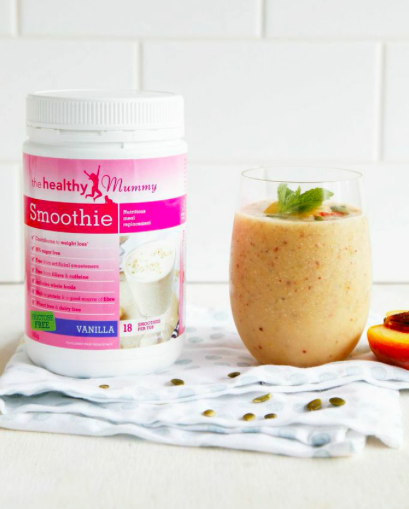
Some great options:
- Healthy Mummy Smoothie
- Scrambled eggs on wholegrain toast with avocado
- Porridge with berries and yoghurt
- Quinoa Breakfast Muffins
Morning Tea
We actively encourage you to eat morning and afternoon tea on our plans.
It keeps your metabolism firing which in turn helps you to burn off your food more efficiently.
Some great options would be:
- A banana and 10 almonds
- Low fat yoghurt with berries
- 100% natural peanut butter on a Ryvita cracker
If you felt like baking, why not try one of our healthy options from the website such as our Apple and Blueberry Loaf, or Berry and Bran Muffins.
Lunch
Once again it’s important not to wait until you are absolutely famished to think about lunch.
When we are very hungry, our emotions can take over our rational side and we can end up making a poor food choice.
Prepare yourself in advance by always having healthy options available whether you are at home or at work.
It’s also important at lunchtime to ensure that you have a good mix of proteins, healthy carbohydrates and plenty of veggies and leafy greens to bulk out your meal.
A cheese sandwich is not going to cut it as it won’t keep you full for very long.
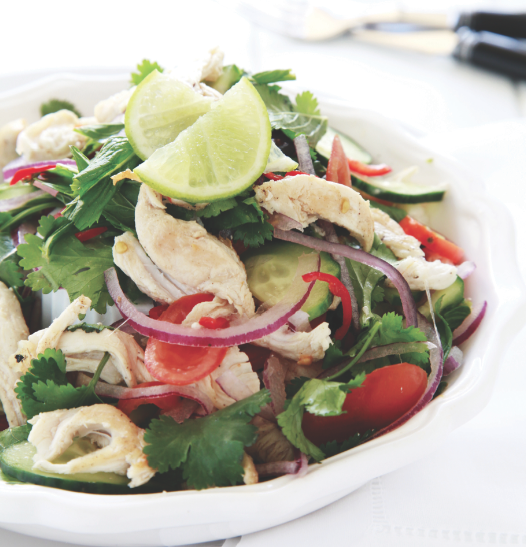
Some other healthy lunch options would be:
- Salmon and salad sandwich
- Leftovers from last night’s healthy dinner
- Tuna and veggie frittata
- Soup with some wholegrain pasta in it
- Chicken rice paper rolls
- Thai Chicken Salad
It’s great if you can make something that will last you for several days, such as a soup, lasagne, tart or frittata.
Afternoon Tea
Depending on what time you ate lunch, you will often find that you feel hungry again around 2.30pm – 3pm.
This is typical danger zone time, when the sweet cravings can strike.
To overcome these, try to make it a habit to have a herbal tea after lunch. A peppermint or ginger tea can satisfy the craving and fill you up enough to last until afternoon tea time.
Some great choices for afternoon tea are:
- 3 wholegrain crackers with some low fat cottage cheese and cherry tomatoes on top
- Sliced chunks of apple and pear with some home made hummus
- Chopped melon with Greek yoghurt
Dinner
We have so many healthy meal ideas in our 28 Day Weight Loss Challenge. There is no excuse for getting stuck in a food rut!
Keep things interesting by trying new recipes out or tweaking old favourites.
As with lunch, it’s important to get the balance right between quality proteins (chicken, tuna, beef, legumes, tofu, salmon), good fats (avocado, olive oil, nuts, seeds), healthy wholegrain carbs (brown rice, wholegrain bread, wholemeal pasta) and healthy vegetables.

Some examples of an ideal dinner would be:
- Healthy Shepherd’s Pie
- Beef Pho Soup
- Chicken Noodle Stir Fry
- Healthy Veggie Burger
- Lasagne with a big side salad
- Mexican Stir Fry with brown rice
- Lamb and Coconut Curry
- Chicken Pad Thai
After Dinner
For many people this is another danger zone time of day, as the sugar cravings strike once more.
Some tips for this are to brush your teeth after your meal, so that you are less inclined to want to keep eating. Brushing your teeth is a signal to your brain that the meal is over.
You can also try to ensure that your dinner is bulked up with healthy veggies, as this will keep you feeling fuller for longer.
Try not to keep sweets in the house if they are your weakness. A better idea is to keep the ingredients on hand for some healthy options for a special treat (not every night). For instance our Avocado, Coconut, Date and Chocolate Pudding; Coffee and Date Slice; or our Rhubarb and Apple Crumble.
And if you are really hungry still check out our snacking section here – lots of healthy snacks to choose from
For more information , see our Breastfeeding Information page. You may also like to visit our Breastfeeding Q&A page for further answers to your questions
*This material is for information only and not intended to replace the advice of a medical professional. Please consult with your Doctor before starting any weight loss program and do not begin any exercise routine unless you have your Doctor’s clearance.
We also recommend talking to your Doctor if your baby suffers from Colic before starting any diet plan as certain foods may exacerbate the colic if you are breastfeeding.
And when introducing any new food into your diet, we advise being alert to any food sensitivity in your baby such as a change in bowel movements and discontinuing any new diet plan if any food sensitivity occurs.

